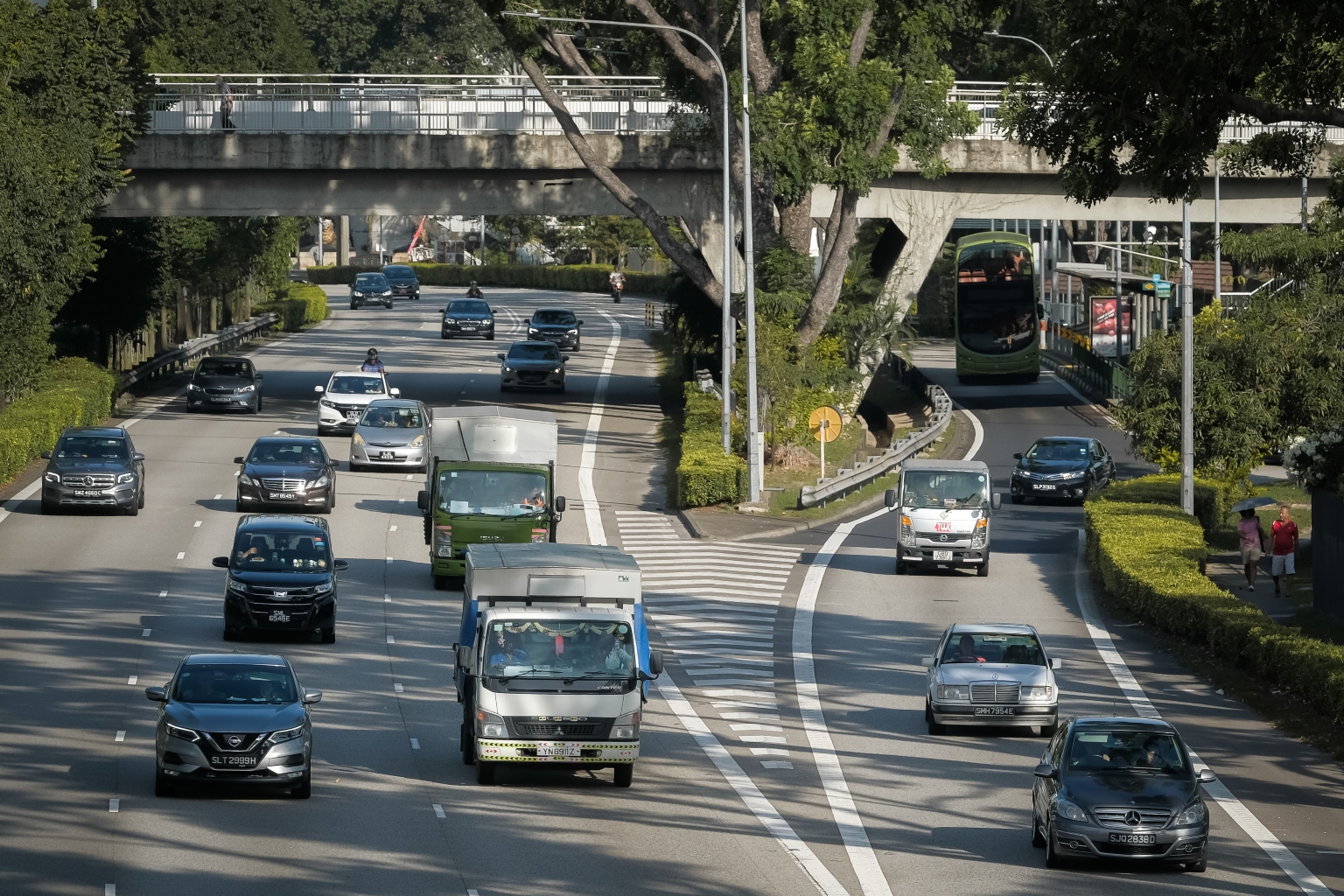Car emissions scheme extended until end-2023, thresholds to be tightened from 2024
Sign up now: Get ST's newsletters delivered to your inbox

From Jan 1, 2024, thresholds for the various pollutant levels in the carrot-and-stick scheme will be lowered.
ST PHOTO: GAVIN FOO
Follow topic:
SINGAPORE - Car buyers and sellers here will be nudged further to adopt environmentally cleaner models such as electric vehicles (EVs) when a tightened emissions scheme kicks in from 2024.
This is a year later than expected, as the current scheme is due to expire at the end of this year.
The Straits Times understands this was because the motor trade had appealed for more time so that manufacturers could make changes to meet stricter standards.
In a joint announcement on Thursday (June 30) morning, the National Environment Agency (NEA) and Land Transport Authority (LTA) said the current Vehicular Emissions Scheme (VES) - which is valid till Dec 31, 2022 - will continue for another year with no change.
But from Jan 1, 2024, thresholds for the various pollutant levels in the carrot-and-stick scheme will be lowered.
Among the bigger changes are nitrogen oxide and particulate matter levels - two pollutants that have direct and serious health implications.
For instance, the nitrogen oxide threshold is lowered by as much as 30 per cent and the particulate matter threshold by as much as 50 per cent.
"The more stringent thresholds for emissions of carbon dioxide, hydrocarbons, carbon monoxide, nitrogen oxides and particulate matter clearly distinguish pure internal combustion engine cars, cleaner alternatives such as hybrids, and electric vehicles," the announcement read.
The two agencies added that there will be no change to the VES rebate till Dec 31, 2023, and no change to the VES surcharge till Dec 31, 2025.
Rebates applicable from Jan 1, 2024, will be announced in 2023.
Examples of cars which currently meet the tightened A1 band - the highest standards which qualify them for the highest tax rebate - include the Tesla Model 3 and S (including Performance variants), Nissan Leaf, Hyundai Ioniq, MG ZS EV, and Hyundai Kona Electric.
Those that will fall into the lowest C2 band - which attracts the heftiest surcharge - include the Mercedes-Benz C180, Toyota Vios, Audi Q3 and Honda Odyssey.
Mr Ron Lim, head of sales and marketing at Nissan agent Tan Chong Motor Sales, said: “Considering the current backdrop of escalating certificate of entitlement prices and global supply chain challenges, the decision to delay tightening the current VES limits... is definitely welcome news.
“Hopefully, with the new 18-month lead time, industry players will now have more time to work with their respective manufacturers to get appropriate models which meet the new VES limits.”
Ms Sabrina Sng, managing director at Wearnes Automotive in charge of Swedish EV brand Polestar, said: "I think the measures are in the right direction, to encourage consideration of cleaner emission vehicles. But the incentive amount needs to be higher to get wider and quicker EV adoption.
"In countries such as Norway and the Netherlands, EVs are cheaper than internal combustion engine cars - that makes it much easier to swing consumers."
A BMW Asia spokesman said the announcement was “a strong signal from the Government to encourage drivers to switch to cleaner vehicles” and for manufacturers to “provide viable options to customers”.
She added that BMW Group will be expanding its electrified fleet “in the coming months and years”.
The start of the stricter VES in 2024 coincides with the transition to a new benchmark cars imported to Singapore have to meet.
The so-called Worldwide Harmonised Light-duty Vehicles Test Procedure (WLTP), which measures vehicle pollutant levels under more realistic conditions and which has been in place in Europe for a number of years now, will kick in here for all new car models from Jan 1, 2024.
With WLTP, some models that currently qualify for VES rebates may fall into the neutral B band.
Parallel importers reckon one such model will be the Honda Vezel Hybrid, one of their bestsellers.
If so, the Vezel will no longer have an advantage over the HR-V - an export version of the Vezel sold by authorised Honda agent Kah Motor.
“Unless Japan can lower the emissions of the Vezel, we will lose a lot of sales,” one said.
But authorised agents said one main reason why parallel imports have this edge is because the authorities allow such cars to have an emissions concession.
The so-called evolution coefficient applies a 0.92 factor to the tested emission levels of parallel imports, on account that these cars are not run in like manufacturer-sourced models when test values are captured.

